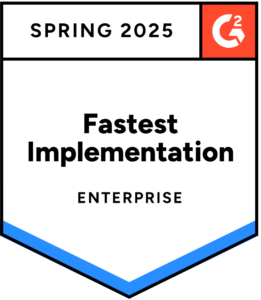Rethinking Finance KPIs for the AI Era
Infographic
Share
How Do KPIs Change in the AI Financial Close?
AI and intelligent automation are enabling a new operating model – one that is continuous, dynamic, and insight-led. Success is no longer defined by how fast you close the books. It’s defined by how quickly you generate value from your data.
Traditional financial close KPIs were designed to measure the speed, accuracy and cost-efficiency of batched activities and reporting during the period end. But as we enter the era of the AI Financial Close, these KPIs are no longer enough.
![AI and intelligent automation are enabling a new operating model – one that is continuous, dynamic, and insight-led. Success is no longer defined by how fast you close the books. It’s defined by how quickly you generate value from your data.
Traditional financial close KPIs were designed to measure the speed, accuracy and cost-efficiency of batched activities and reporting during the period end. But as we enter the era of the AI Financial Close, these KPIs are no longer enough.
Holistic Close KPIs
Time to close: Identifies how successfully the team is meeting their close target timeline
P/L exposure: Gives an indication of the impact on profitability and risk to the business
Process cost: Identifies the cost of managing the entire R2R process as a ratio of total revenue
Close quality: Measures time to close, process cost, profit & loss to indicate the quality of the overall process
Reconciliation & Journal Entry KPIs
On-time reconciliations: Demonstrates the effectiveness of the reconciliation process
Number & Aging of Reconciling Items: Gives insight into how long specific tasks have been assigned and indicates which tasks should be prioritized.
Manual journal entries processed per FTE: Helps with equal distribution of work and can indicate the need for automation
Compliance KPIs
Issue Time to Resolution: identifies the period from when an issue is caught to the time it is resolved—an efficiency indicator
[Text below left side—it’s intended to transition us from the traditional KPIs to the new AI KPIs]
While these are valid success metrics for the financial close, they focus on lagging indicators. As finance teams begin to implement AI into their close, some of these KPIs will remain, but your team’s benchmarks for them will change, others will lose their value and relevance.
[Right side KPIs]
Finance KPIs for the New Finance Function
As teams implement AI tools in the financial close, they need a new set of KPIs to measure success and ROI. These KPIs measure not just efficiency – but effectiveness, proactivity, and insight-to-action velocity.
Operational Intelligence KPIs
Indicate how well AI is reducing manual effort and surfacing issues earlier in the period:
• AI Suggestion Acceptance Rate: % of AI-suggested journal entries or suggested reconciliations that are ultimately accepted by human reviewers (vs. rejected)
• Real-Time Anomaly Resolution Time: Average time from anomaly identification to resolution via AI alerts (either within an application, or sent via direct channels)
• Reduction in Rework/Reopened Items: Tracks the percentage of reconciliations or journal entries re-opened due to errors
Predictive Insight KPIs
Evaluate the speed, depth, and impact of finance-led insights through usage of AI-driven tools and capabilities:
• Forecast Accuracy Deviation: Difference between AI-predicted and actual revenue, cash flow, or expense metrics
• Insight-to-Decision Velocity: Time between insight generation and business action taken
• Rate of Risk Identification (AI-Driven): Number of risk triggers flagged by AI vs. manual identification rate
User Enablement & Experience KPIs
Assess the adoption and effectiveness of AI-assisted support and the finance team’s ongoing usage of them:
• Self-Service Success Rate: % of user inquiries resolved via AI help, onboarding assistants, or error support
• Time to Productivity for New Hires: Measures how quickly new finance employees independently complete close tasks using AI assistance
• User Engagement with AI: Number of AI-assisted actions (queries, suggestions, support interactions) per user per period
Governance & Compliance KPIs
Ensure your AI is not just effective in areas of risk management – but also safe and accountable.
• Compliance Risk Flag Reduction: Change in number of risk-related flags after AI-assisted compliance monitoring
• Model Explainability Coverage: % of deployed AI models with available trust center documentation and human-readable audit trails
Holistic Close KPIs
Time to close: Identifies how successfully the team is meeting their close target timeline
P/L exposure: Gives an indication of the impact on profitability and risk to the business
Process cost: Identifies the cost of managing the entire R2R process as a ratio of total revenue
Close quality: Measures time to close, process cost, profit & loss to indicate the quality of the overall process
Reconciliation & Journal Entry KPIs
On-time reconciliations: Demonstrates the effectiveness of the reconciliation process
Number & Aging of Reconciling Items: Gives insight into how long specific tasks have been assigned and indicates which tasks should be prioritized.
Manual journal entries processed per FTE: Helps with equal distribution of work and can indicate the need for automation
Compliance KPIs
Issue Time to Resolution: identifies the period from when an issue is caught to the time it is resolved—an efficiency indicator
[Text below left side—it’s intended to transition us from the traditional KPIs to the new AI KPIs]
While these are valid success metrics for the financial close, they focus on lagging indicators. As finance teams begin to implement AI into their close, some of these KPIs will remain, but your team’s benchmarks for them will change, others will lose their value and relevance.
[Right side KPIs]
Finance KPIs for the New Finance Function
As teams implement AI tools in the financial close, they need a new set of KPIs to measure success and ROI. These KPIs measure not just efficiency – but effectiveness, proactivity, and insight-to-action velocity.
Operational Intelligence KPIs
Indicate how well AI is reducing manual effort and surfacing issues earlier in the period:
• AI Suggestion Acceptance Rate: % of AI-suggested journal entries or suggested reconciliations that are ultimately accepted by human reviewers (vs. rejected)
• Real-Time Anomaly Resolution Time: Average time from anomaly identification to resolution via AI alerts (either within an application, or sent via direct channels)
• Reduction in Rework/Reopened Items: Tracks the percentage of reconciliations or journal entries re-opened due to errors
Predictive Insight KPIs
Evaluate the speed, depth, and impact of finance-led insights through usage of AI-driven tools and capabilities:
• Forecast Accuracy Deviation: Difference between AI-predicted and actual revenue, cash flow, or expense metrics
• Insight-to-Decision Velocity: Time between insight generation and business action taken
• Rate of Risk Identification (AI-Driven): Number of risk triggers flagged by AI vs. manual identification rate
User Enablement & Experience KPIs
Assess the adoption and effectiveness of AI-assisted support and the finance team’s ongoing usage of them:
• Self-Service Success Rate: % of user inquiries resolved via AI help, onboarding assistants, or error support
• Time to Productivity for New Hires: Measures how quickly new finance employees independently complete close tasks using AI assistance
• User Engagement with AI: Number of AI-assisted actions (queries, suggestions, support interactions) per user per period
Governance & Compliance KPIs
Ensure your AI is not just effective in areas of risk management – but also safe and accountable.
• Compliance Risk Flag Reduction: Change in number of risk-related flags after AI-assisted compliance monitoring
• Model Explainability Coverage: % of deployed AI models with available trust center documentation and human-readable audit trails](https://www.trintech.com/wp-content/uploads/2025/08/Infographic_Traditional-vs-AI-Fin-Close-KPIs_IG-1024x663.png)
Download the full infographic for an easier to read (and share!) version of this infographic, comparing the traditional financial close KPIs with those of an AI-driven financial close to help your team demonstrate the value and ROI of your AI investment.






